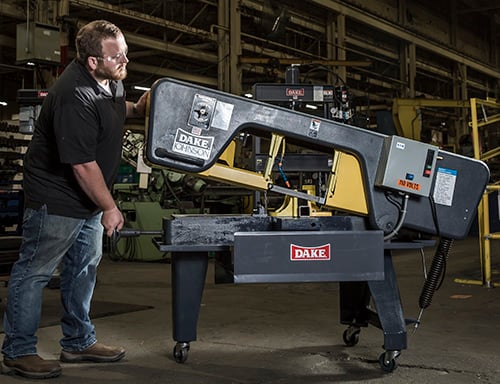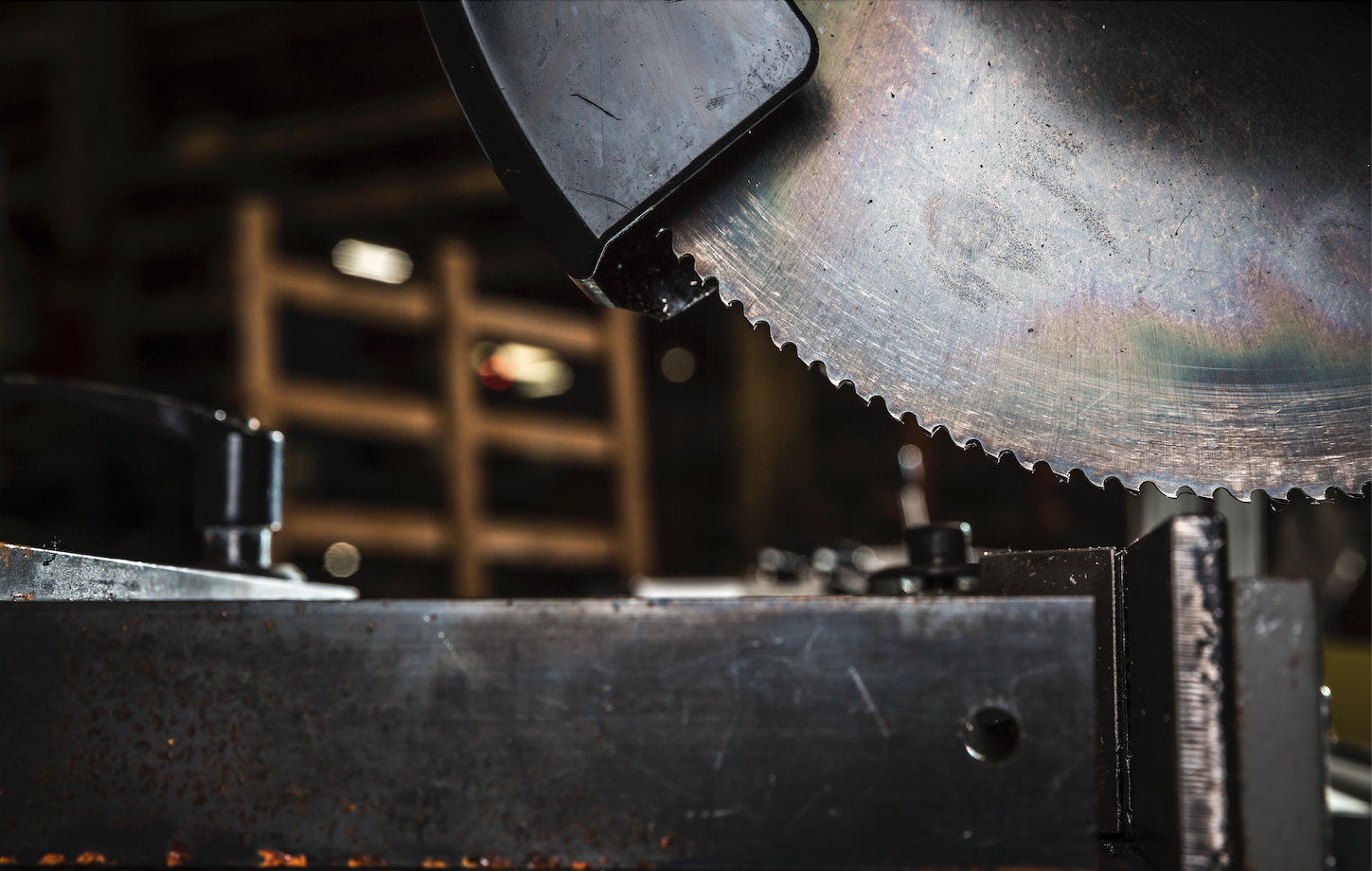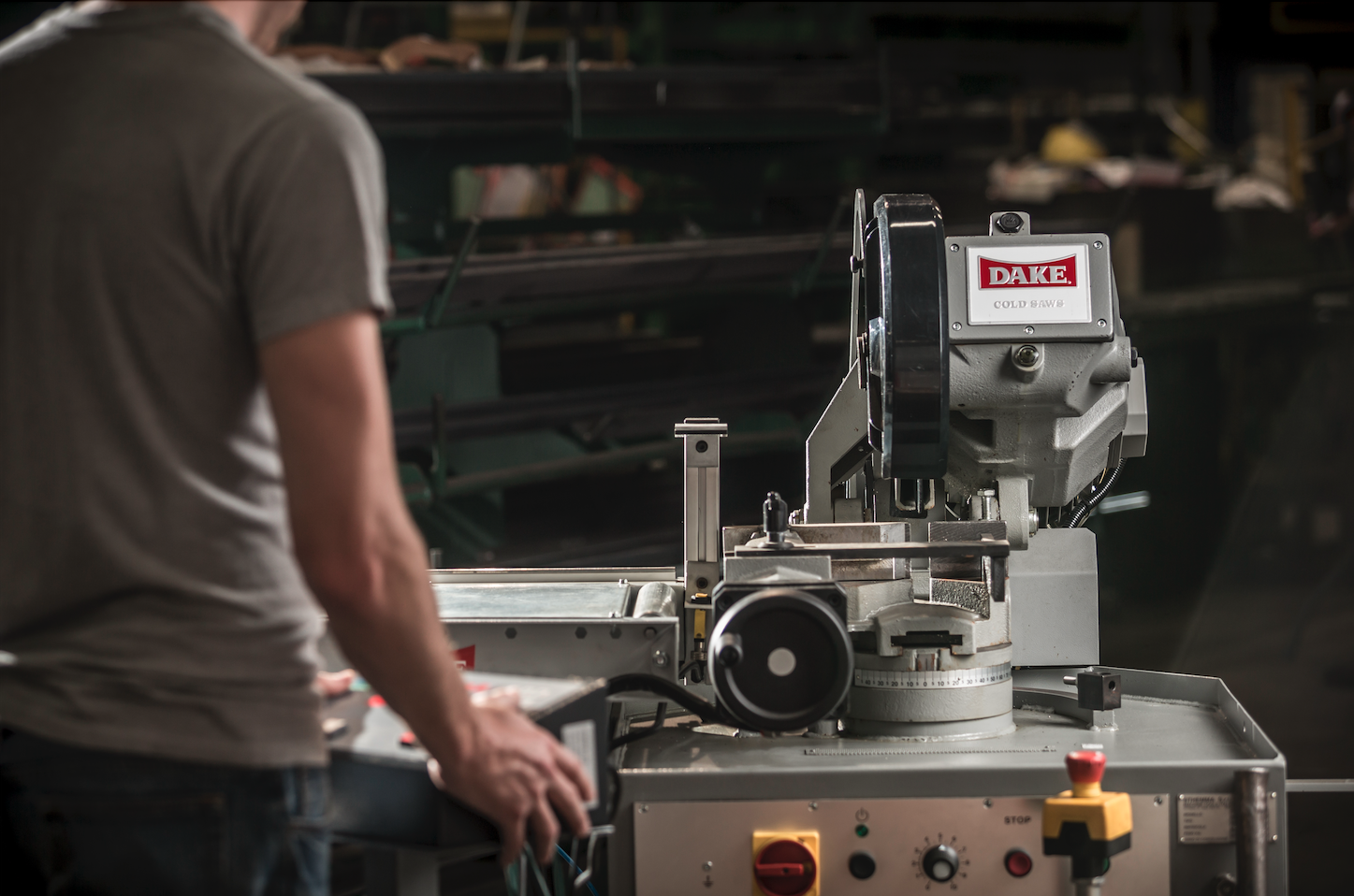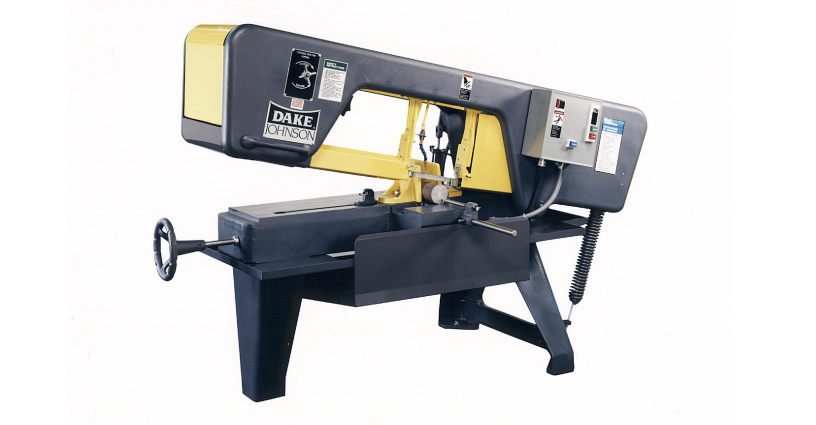As a rule of thumb, your application will dictate your options for metal cutting. Here are few tips to help you determine whether a cold saw or a bandsaw is right for you.
1. Size
The size of material that you are cutting will be a determining factor in whether you need a bandsaw or a cold saw. A bandsaw will give you a larger cutting capacity, whereas a cold saw will limit your cutting capacity. A 14” cold saw may give you a capacity of 4 ¾” round material compared to a bandsaw- such as our SE 912 model- which will give you the capacity of 9” rounds.
You may be asking yourself "Why does a cold saw with a larger specification of 14” offer a smaller capacity"? The answer is that the specification is denoted by blade diameter, not capacity. The blade hub and radius will limit the material size that the cold saw is capable of cutting. With a bandsaw, the specification is determined by the clearance of the blade to the head frame.
Quick Tip: Typically, a bandsaw model will give you a hint as to the round cutting capacity of the saw. For example, our SE 912 saw has a 9” round capacity and our JH10W saw has a 10” round capacity.
2. Hardness
Material hardness also comes in to play when determining the best saw for your application. A cold saw will put limits on the material hardness you can cut. Anything above 42Rc is going to turn your blade into a butter knife since the harness of the blade is only 60-63Rc.
On the other hand, bandsaw blades have many different configurations and teeth hardness options to give quality results for cutting hard material. However, even with these great options, there are still a few applications that neither can handle such as required abrasive cutting.
3. Kerf
If saving material (and money) is a concern, then the kerf cut should be figured into the cost of a job! A cold saw has a rigid blade with a wider kerf. On most standard cold saw blades the kerf is 2.5 – 3 mm. A bandsaw blade, on the other hand, can be 42 thousandths of an inch. While that doesn’t sound like much, over the lengths of the material it can add up to a nice cost saving.
A standard cold saw blade uses a triple grind which gives chip clearance but also means that the kerf is the same size as the thickness of the blade. A standard bandsaw blade uses a wavy grind, or offset tooth design, keeping the blade kerf to a minimum.
4. Finish
If you are looking for an optimum finish the cold saw is the way to go. It will give you a super square, accurate cut with a milled like finish.
This means tight miter joints and cutting the part to length while eliminating the secondary operation of re-facing or cleaning the cut surface.
5. Practicality
Which is more economical, the cold saw or the bandsaw? The truth is that it is hard to say and will depend on what you are looking for in the application.
While the initial price of a cold saw blade may be higher than a bandsaw blade, it's important to remember that a cold saw blade can be re-sharpened. A bandsaw blade needs to be discarded once it goes bad.
The re-sharpening aspect of a cold saw blade would be a cost savings. Down time for a cold saw blade change will be less than that of a bandsaw blade change. These factors can add up to a nice cost savings. However, if you are using a cold saw for the wrong application just to save money, you will end up paying more in the long run to replace a saw.
No matter which type of saw you choose, Dake has a model that will give you the results you expect.
-1.jpg?width=1200&height=525&name=DAKE003_%20Logos_Red%20(002)-1.jpg)




